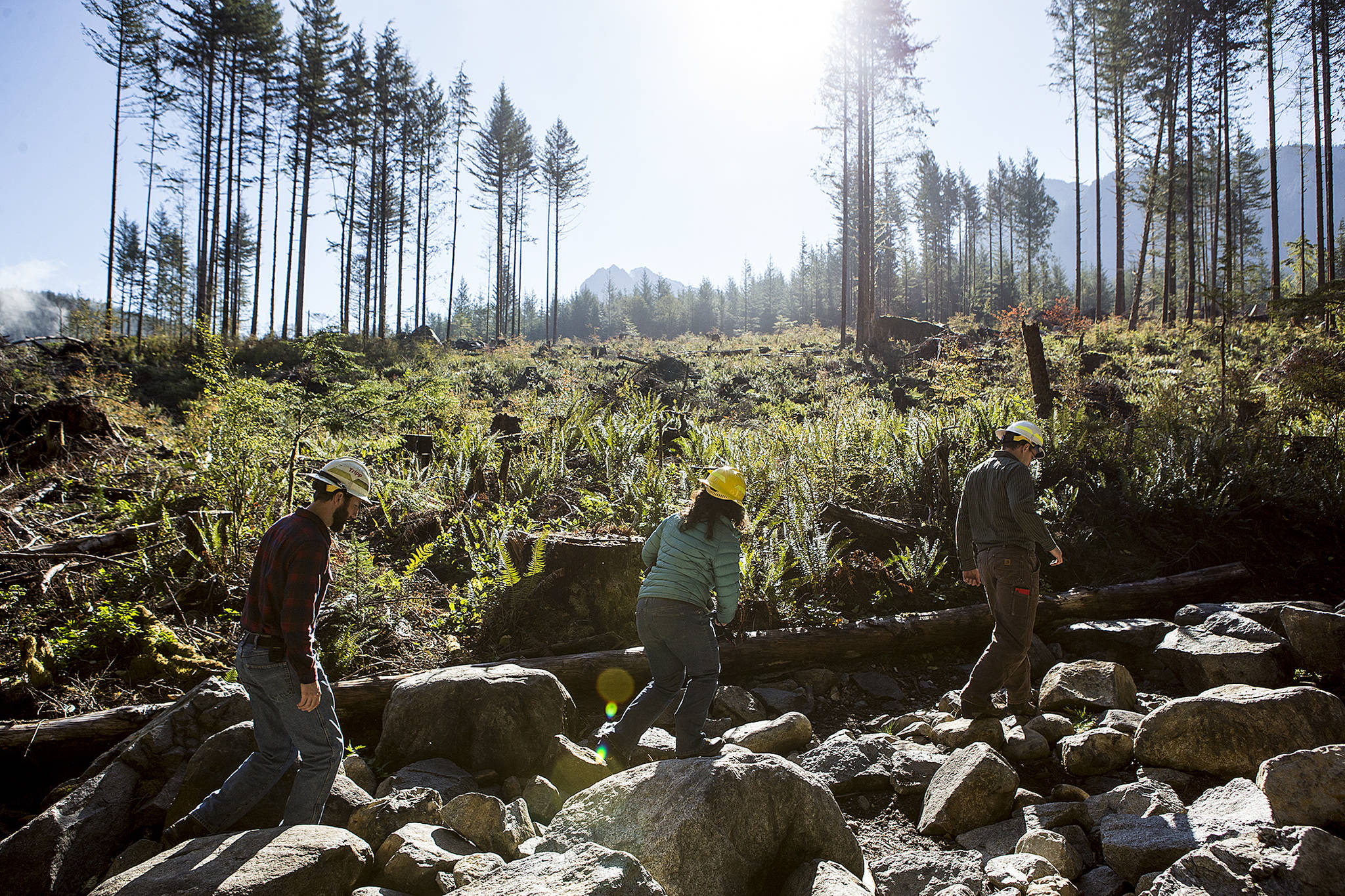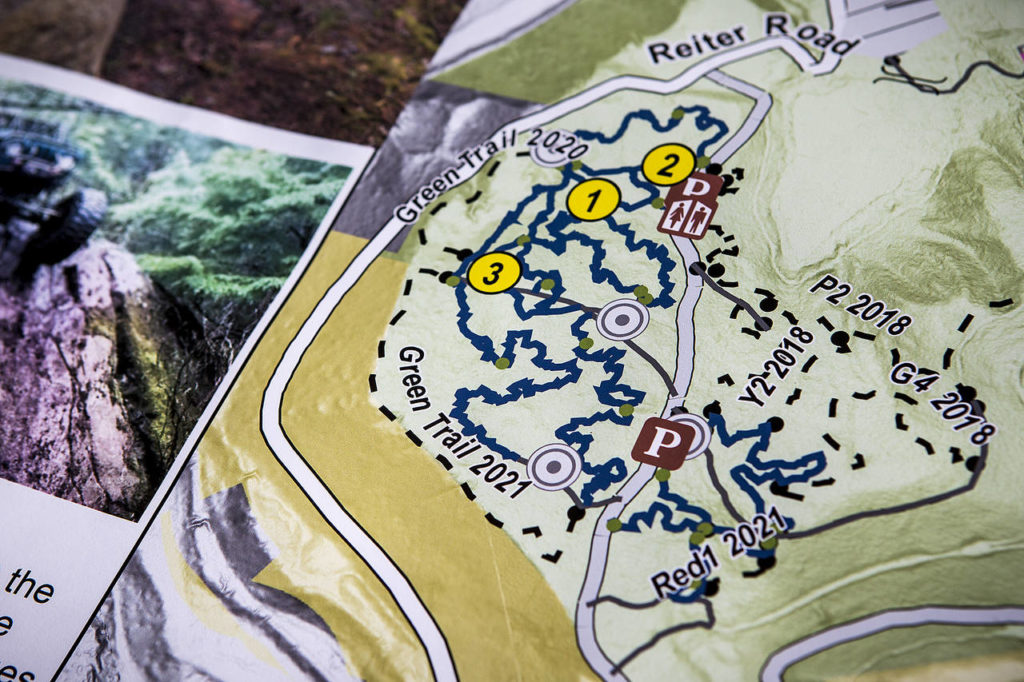GOLD BAR — The state has agreed to buy three bridge spans from a logging company as part of the legal fallout from an environmental lawsuit that stopped the Singletary timber harvest from going ahead.
The Department of Natural Resources also promises to work with environmental groups who filed the suit before making another attempt to log the area next to Wallace Falls State Park. At the same time, state officials insist they have a duty to log the area — both to raise money for local governments and to develop outdoor recreation trails.
“We recognize at the department that we need to do a better job of telling people what we plan to do on the landscape and listen as well,” said Angus Brodie, DNR’s deputy supervisor of uplands.
In the Oct. 4 settlement, the DNR agreed to pay Sierra Pacific Industries $184,000 for three bridge spans. The Anderson, California, company bought the hardware after it put in a successful $1.7 million bid to harvest Singletary this spring. The state also refunded Sierra Pacific about $274,000 in deposits.
“The fact that it was vacated was no fault of theirs,” Brodie said.
Two 50-foot bridge spans are standard and could be put to use fording streams on other DNR lands, he said. A longer one, measuring 87 feet, had been intended for crossing May Creek. That also might prove useful, at Singletary or some other location.
The suit was filed by the Pilchuck Audubon Society, Friends of the Wild Sky and the Skykomish Valley Environmental & Economic Alliance. A Seattle-based environmental attorney who worked with them called the settlement over the unused bridges “an avoidable expense.”
“They were in such a rush that now they’re paying for it,” Peter Goldman said of the DNR. “They needlessly incurred that expense.”
Now, the environmental groups and state officials are trying to work out a mutually agreeable way to log the forest. The state, for now, will hold off on another auction. The agency does not intend to appeal an Aug. 11 ruling in Snohomish County Superior Court that canceled the sale.
Goldman and his partners hired a professional forestry consultant to draft an alternative plan for logging the Singletary area. They hope to present it to the DNR soon.
“There would be very reduced clear-cutting, fewer roads,” he said.
State forestry officials say they’re interested in seeing it.
“We’re not going to reject any good ideas,” Brodie said. “We’re going to hear them.”
Proceeds from Singletary would have gone toward schools, Snohomish County, the local fire district, Sno-Isle Libraries and the hospital in Monroe, minus a 25 percent management fee.
The roads, bridges and other infrastructure from the logging operation also form the basis for future recreation trails.
“We want to build these trails,” Brodie said. “We want to use the timber-harvest revenue to build these things. How do we do that?”
Singletary covers 167 acres on the west side of the DNR’s Reiter Forest, which also includes the Reiter Foothills recreation area. It’s all county trust land that the state manages to provide revenue for local government services, while preserving habitat and providing opportunities for outdoor recreation.
Singletary won’t have any motorized trails. Hiking, mountain-biking and horseback-riding paths there could eventually connect to state parkland around Wallace Falls.
Motorcycles, ATVs and off-road vehicles, or ORVs, are confined to the southeastern part of Reiter Forest. The principle of converting logging roads and bridges to recreation trails is the same.
“Recreation is recreation, whether it’s an ORV or you’re hiking,” said Ben Hale, recreation manager for the DNR’s Cascade District.
In the southeast portion of Reiter, the agency has developed trails for motorized uses such as off-road vehicles, ATVs and motorcycles. Expensive bridges and roads would be impossible to build —or at least much more time-consuming and expensive — without partnerships with timber companies.
“What we’re walking on now is an old logging road,” Hale explained during a trek down an ATV and dirt-bike track that leads to a stunning outlook over the Skykomish Valley.
In another area, the DNR worked with a timber company to install an 80-foot-long steel bridge that will someday connect to a trailhead for off-road vehicles. Hale estimated that the partnership saved his agency $200,000 in costs, plus staff time.
Some Singletary skeptics might object.
“The nonmotorized community doesn’t want all those roads,” Goldman said. “We don’t need all those roads for access.”
Logging Singletary has been debated for more than a decade.
The DNR delayed a sale in 2014 to study concerns from conservationists.
A compromise earlier this year appeared to have removed the log jam. It involved transferring 21 acres back to Snohomish County as parkland. The idea was to preserve trails and scenery that will allow people to reach Wallace Falls from a county-owned trailhead. That would result in less revenue, though.
Sierra Pacific Industries won the timber auction May 24 — a day after three environmental groups sued to stop the sale. The suit argued that the DNR had failed in its duty to perform required studies on the smaller sale.
Noah Haglund: 425-339-3465; nhaglund@herald net.com. Twitter: @NWhaglund.
Talk to us
> Give us your news tips.
> Send us a letter to the editor.
> More Herald contact information.



























